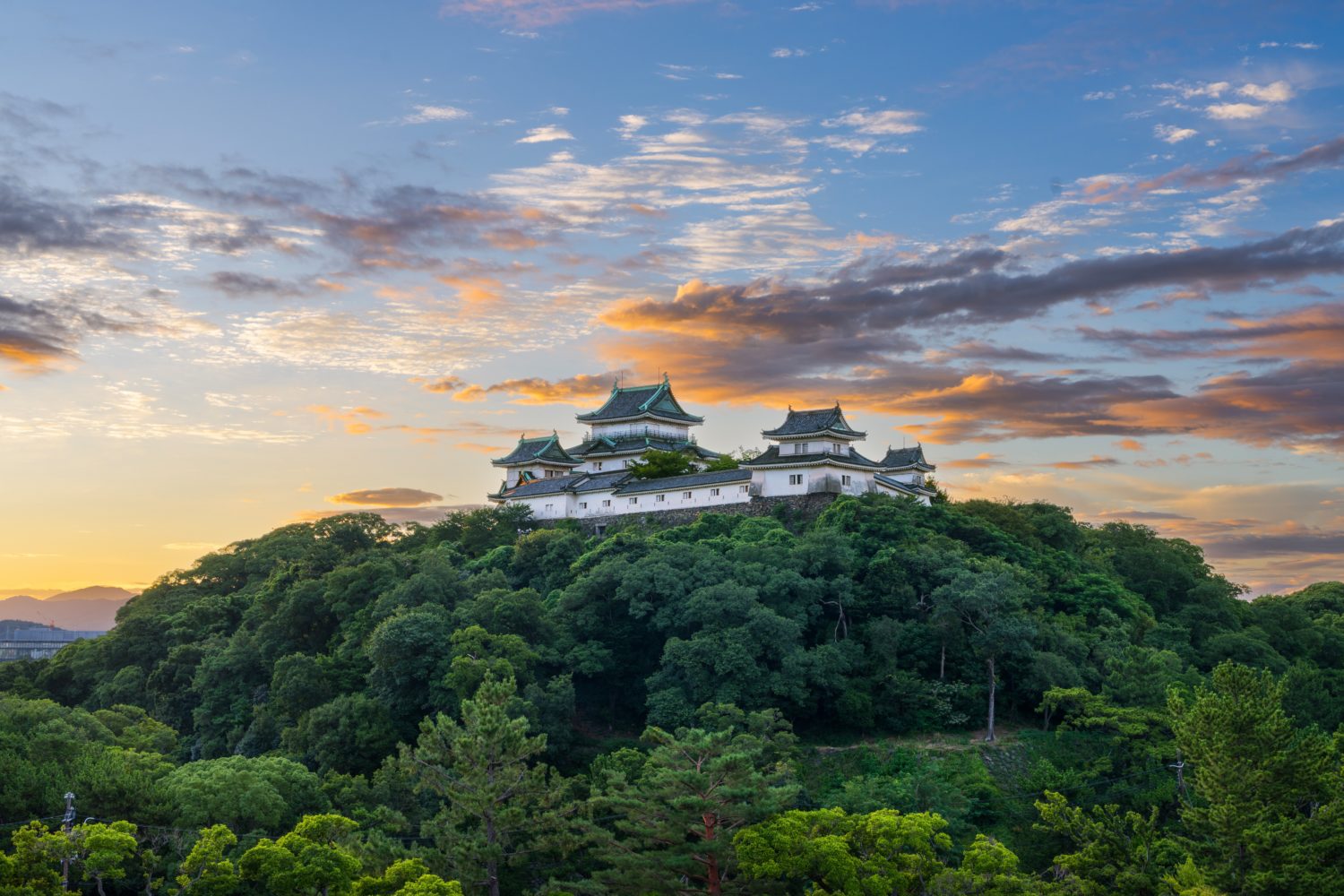
Deep in the heart of Japan’s Kansai region, Wakayama Prefecture is a treasure trove of history, spirituality, and breathtaking natural wonders. It intertwines sacred pilgrimage routes, dramatic coastal landscapes, and tantalising local flavours. Whether you’re mesmerised by the ancient temples, a nature lover seeking adventure, or in search of spiritual fulfillment, Wakayama is a destination that will leave an indelible mark on your soul.
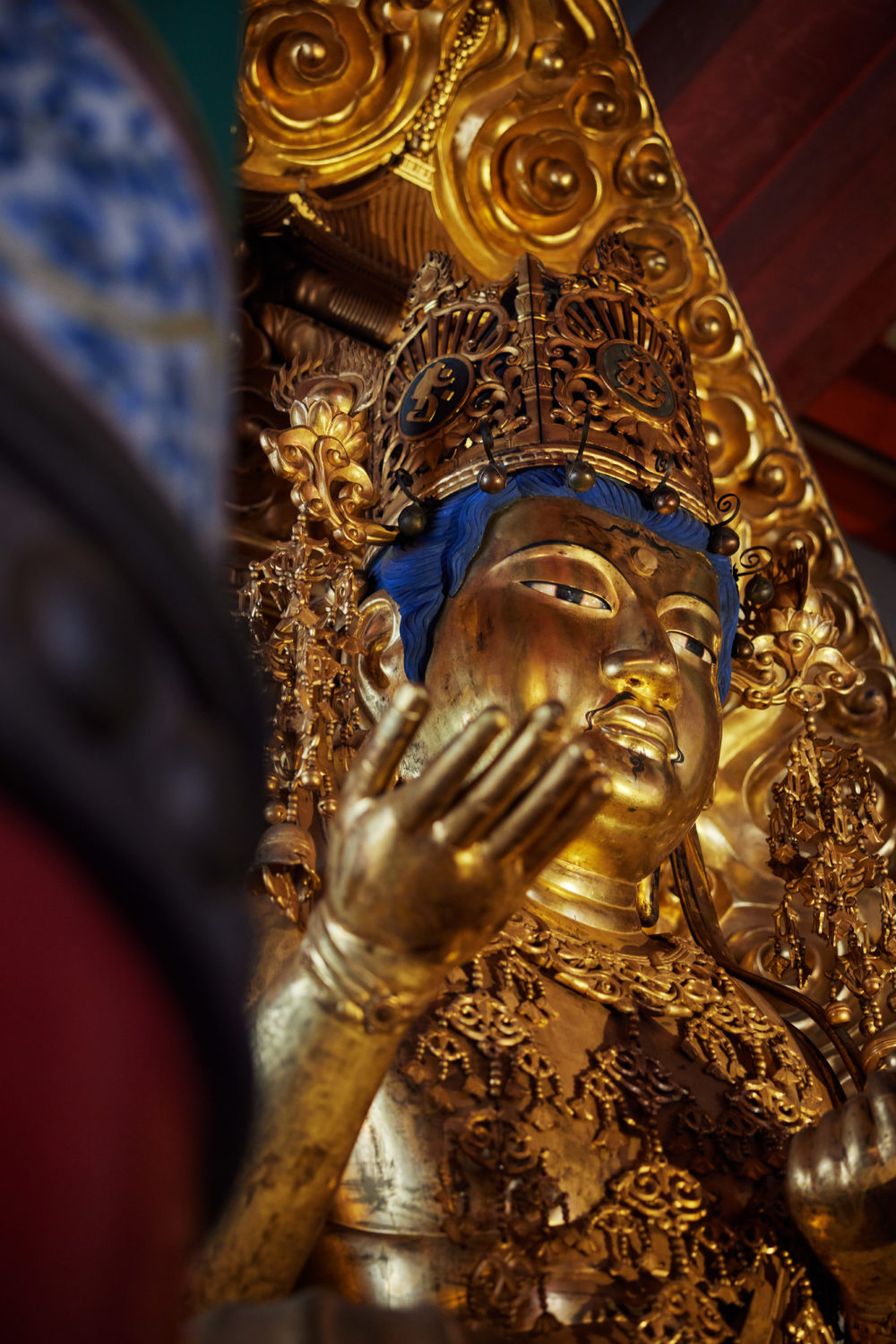
A Spiritual Journey: Koyasan and the Kumano Kodo
Wakayama is home to some of Japan’s most revered spiritual sites, making it an oasis for those seeking tranquility and enlightenment. At its spiritual heart lies Koyasan, a UNESCO World Heritage Site and the epicenter of Shingon Buddhism. Established by the legendary monk Kukai (Kobo Daishi) over 1,200 years ago, Koyasan exudes an otherworldly serenity. Here, you can stay at traditional temple lodgings (shukubo), participate in dawn prayers, and experience shojin ryori—an exquisite Buddhist vegetarian cuisine crafted with delicious seasonal ingredients.
One of Koyasan’s most captivating landmarks is Okunoin, the sacred site of Kobo Daishi’s mausoleum. As you walk through Okunoin’s sprawling cemetery—lined with over 200,000 moss-draped memorial towers and centuries-old lanterns—you’ll feel a deeply profound connection to Japan’s spiritual past.
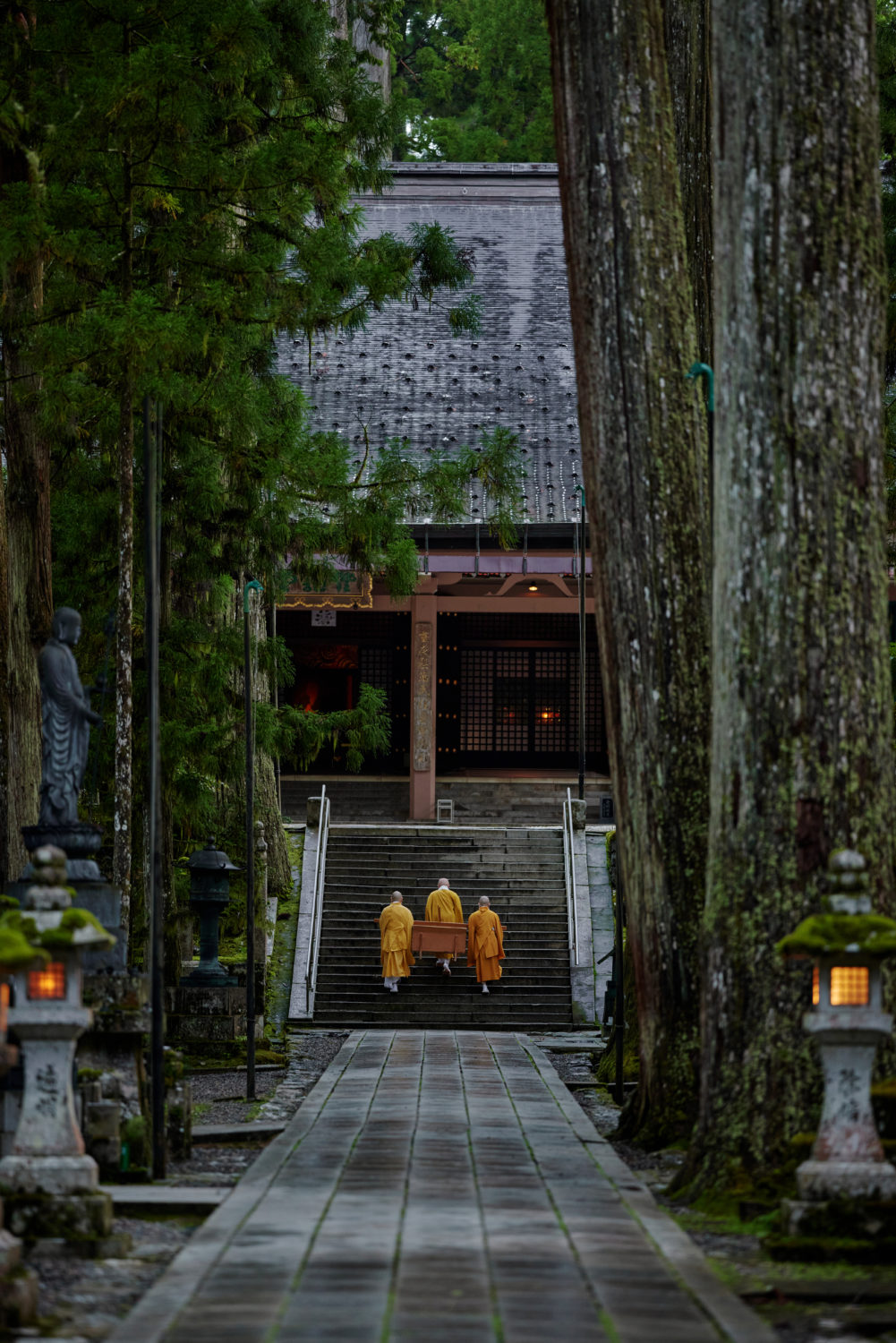
Pay a visit and your respects to Sugen-in, also known as Gou, she was a powerful figure in the early Edo period and her tall memorial tower echoes her incredible legacy. By night, the pathway is bathed in a soft, ethereal glow, enhancing the mystical ambiance of this sacred resting place.
For those yearning for a more immersive pilgrimage, the Kumano Kodo offers an unforgettable journey through time. This ancient network of trails, also recognised as a UNESCO World Heritage Site, has been walked by emperors, monks, and samurais for over a millennium. The trails wind through mist-shrouded forests, past rushing waterfalls, and into secluded mountain villages, culminating at the awe-inspiring Kumano Sanzan Shrines—Kumano Hongu Taisha, Kumano Hayatama Taisha, and Kumano Nachi Taisha. Each shrine possesses its own unique history, but together they form the sacred heart of the Kumano faith.
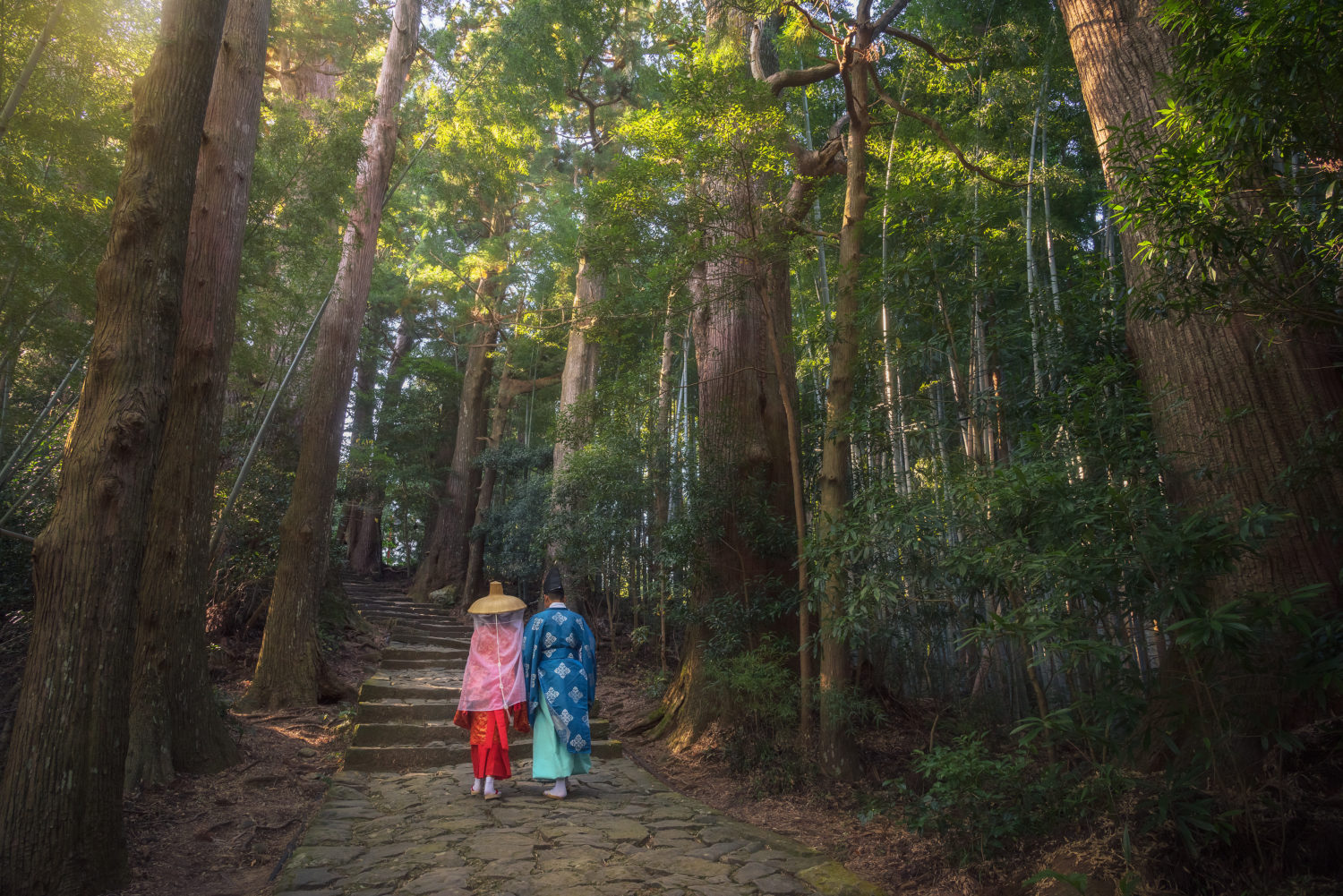
The journey itself is as profound as the destinations. Along the way, towering 900-year-old cedar trees stretch skyward, their twisted branches whispering secrets of centuries past. The air is thick with birdsong, while wild deer, mischievous monkeys, and even boars can be spotted among the foliage. At Kumano Nachi Taisha, the breathtaking Nachi Waterfall—Japan’s tallest, plunging 133 meters—cascades down a sheer cliff, its powerful flow embodying the raw, untamed spirit of nature.
There are many incredible walking tours along the Kumano Kodo trail. A particularly popular walking route starts from the mesmerising cobblestone road, Daimonzaka, and continues uphill for 1.3km across moss-covered stone steps and under a canopy of majestic cedar trees to the Kumano Nachi Taisha Shrine and Seiganto-ji Temple, then to the Nachi Falls.
The Nakahechi Route is the most popular and well-preserved section of the Kumano Kodo. Unlike other pilgrimage routes, the Nakahechi offers a blend of history and nature, with charming ryokans, soothing onsens, and local delicacies like mehari-zushi (pickled mustard leaf-wrapped rice balls) along the way. There is nowhere more mesmerising than this route, to immerse yourself in the beauty of nature and enjoy some quiet introspection, away from the distractions of the modern world.
After a long day walking the Kumano Kodo pilgrimage route, you can head via speedboat to a private island in Nachikatsuura to stay at the luxurious ryokan-style resort of Kumano Bettei Nakanoshima. Surrounded by the serene waters of Nachi Bay and lush greenery, you can soak in the natural hot spring water in your private open-air onsen bath and take in the ocean views. As with everywhere in Japan, the hospitality is exceptional, as is the cuisine which celebrates the finest and freshest local seafood.
Danjo Garan, the monastic complex of Shingan Buddhism, is the beating heart of Koyasan and a place of deep spiritual significance. This magnificent sprawling complex embodies the harmony of Buddhist devotion and nature, it is shrouded by towering cedar trees and is home to numerous temples, pagodas and sacred halls, including the iconic Konpon Daitō (Great Pagoda). Konpon Daito of Koyasan is an imposing structure that is almost 50-metres high. The present building of Daito was built in 1937 and its sheer scale and spectacular design will take your breath away.
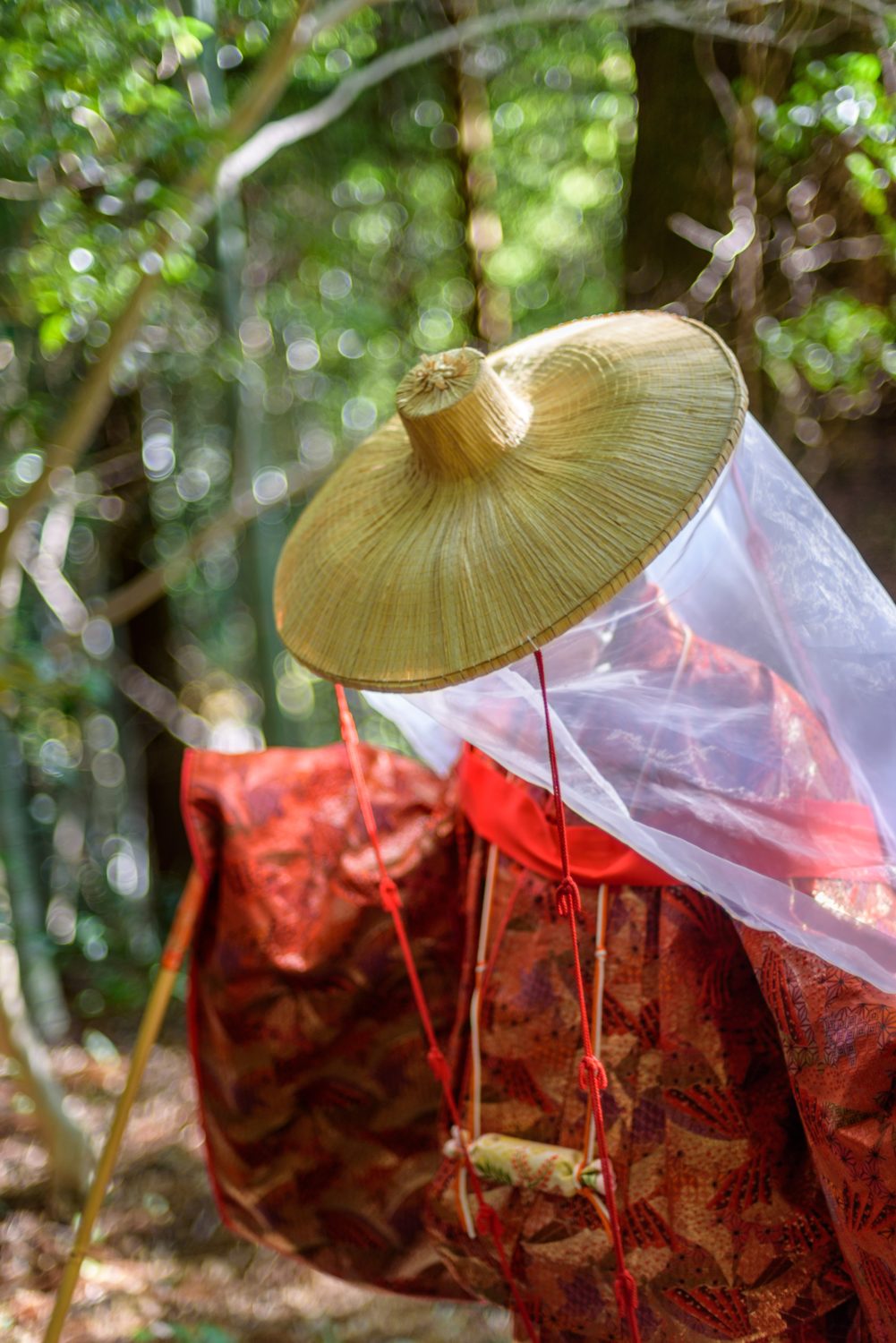
Less than five minutes walk from Danjo Garan is Kongobuji Temple. Originally called Seigan-ji, it was built by Toyotomi Hideyoshi to honour his late mother. The Temple, Kozan-ji, later merged with a neighbouring temple to become the head temple of Shingon Buddhism on Koyasan. It is a place of immense beauty, from the beautiful architecture to the stunning artworks. Visit the Ohiroma Room, used for ceremonies, with fusuma sliding doors adorned with cranes by Toshitsu Saito.
A long corridor leads to a modern wing where you can enjoy tea and view 20th-century fusuma paintings depicting Kobo Daishi’s journey from China to Koya. The tranquil Banryutei Rock Garden, Japan’s largest, symbolises dragons emerging from clouds with massive Shikoku stones. Return to the main hall and pass the Jodannoma Audience Room with its ornate golden walls and intricately carved floral ceilings, before finishing the tour with gigantic rice cookers, capable of preparing meals for 2,000 people.
For a truly enlightening stay, look no further than the Rengejo-in Temple, a historic Buddhist temple that offers you a unique opportunity to experience traditional monastic life. It provides a serene retreat where you can stay overnight, participate in morning prayers, and enjoy shōjin ryōri, a vegetarian Buddhist feast. There are a variety of rooms and suites to choose from but opt for the opulent Spring Evening room that overlooks a serene private garden.
Golden daylight floods the room, illuminating the champagne gold textured ceiling and exquisite Sakura painting that hangs proudly above the bed. Even the television is mounted on a black statement wall that is painted with flecks of silver, like stars illuminating the night sky. The vast bathroom is contemporary with double vanity sinks, Hollywood-style mirrors and a huge circular bathtub that could easily fit 6 people.
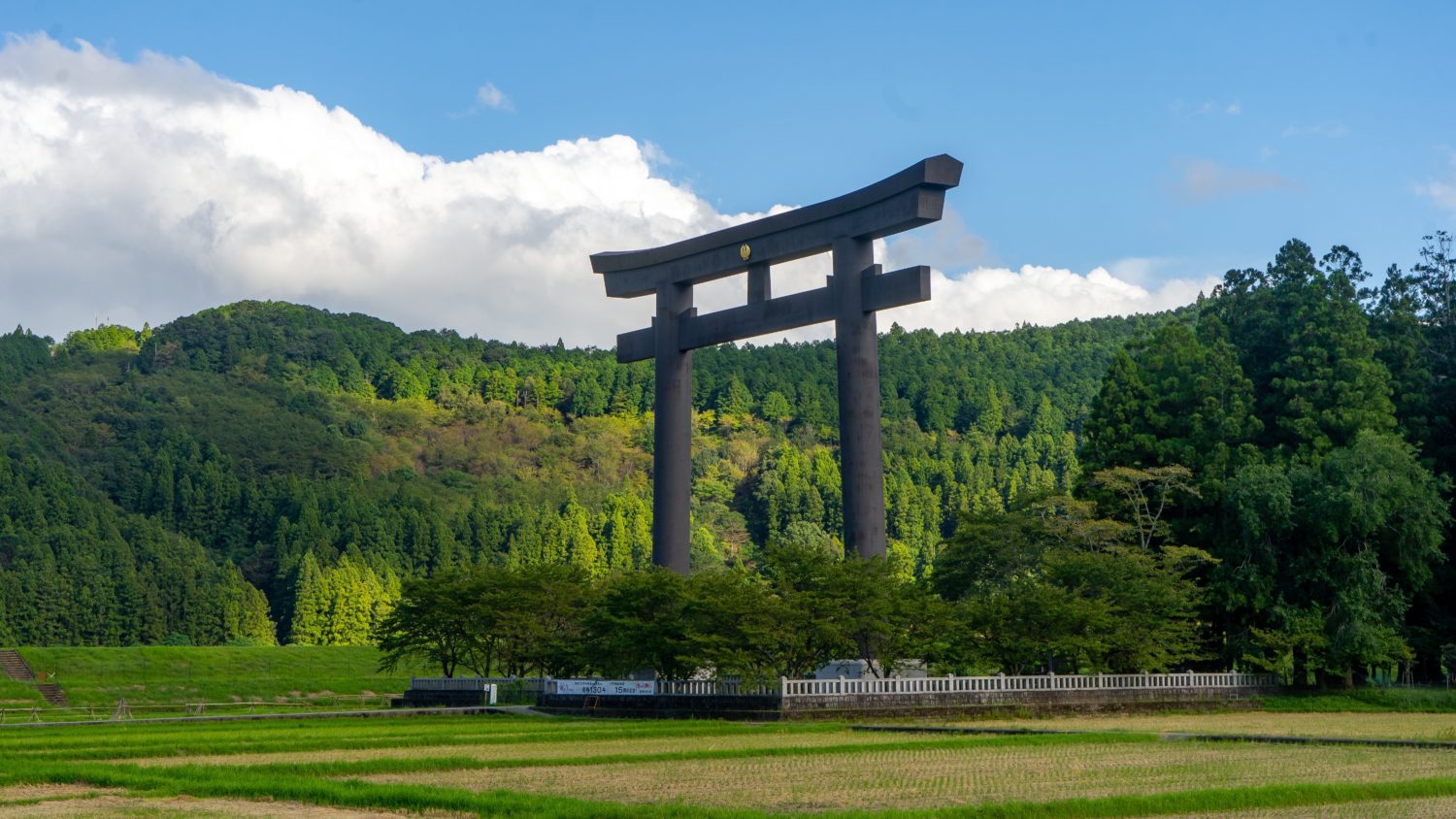
Rengejo-in Temple’s tranquil atmosphere, luxurious lodgings and deep connection to Shingon Buddhism makes it an ideal place for reflection and spiritual exploration. Founded by Kukai (Kobo Daishi), Rengejo-in offers an immersive cultural experience, allowing visitors to witness centuries-old rituals and explore the profound teachings of Japanese esoteric Buddhism.
Wakayama’s deep-rooted spiritual traditions extend beyond its temples and shrines. Scattered along the pilgrimage routes, ancient tea houses welcome weary travelers with steaming cups of green tea, honesty boxes brim with seasonal produce—persimmons, sweet potatoes, and umeboshi (pickled plums)—offered by local villagers in a heartwarming gesture of hospitality.
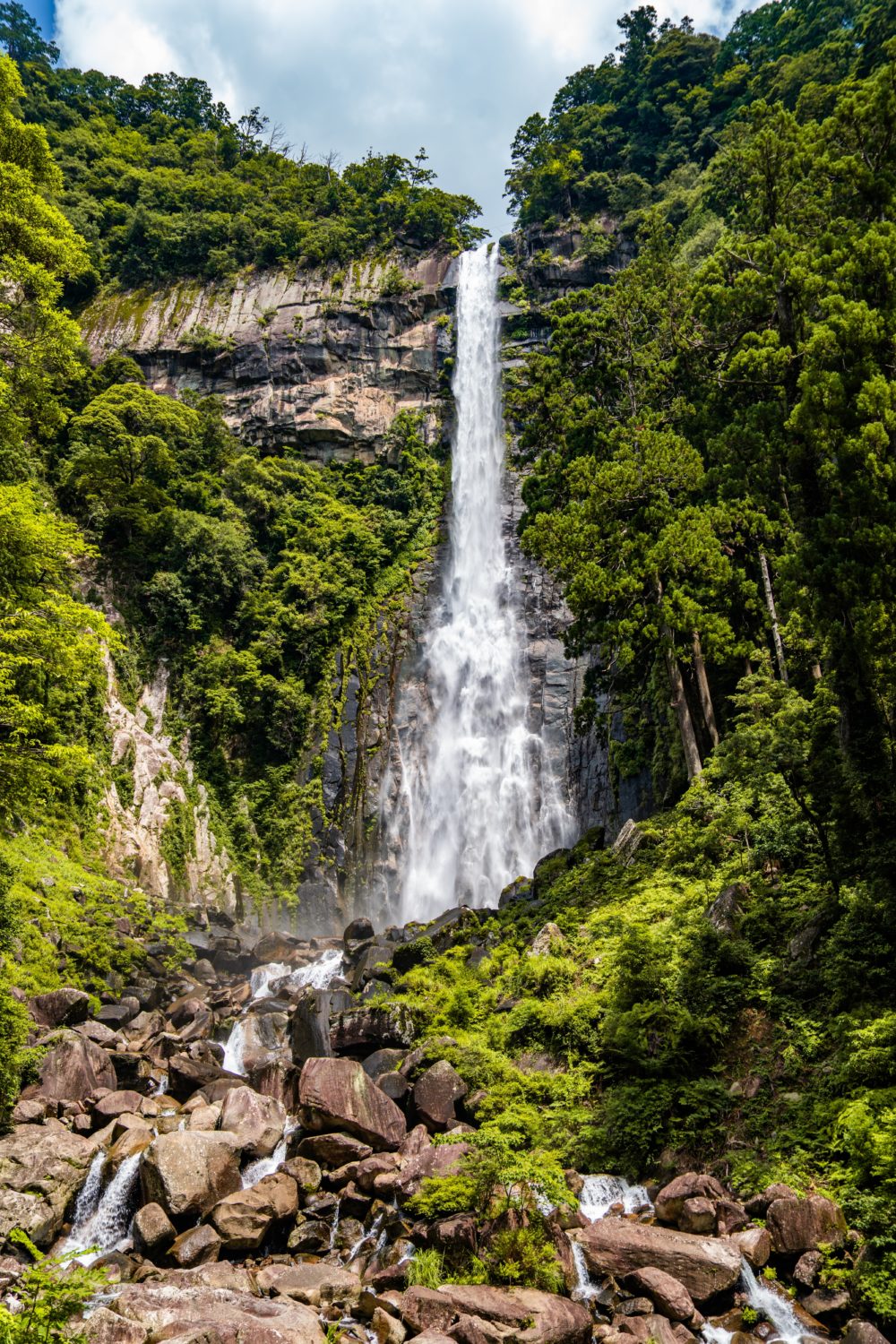
Natural Wonders: Dramatic Coastlines, Hidden Gorges, and Soothing Hot Springs
Wakayama’s diverse landscapes are spectacular. The Kii Peninsula boasts rugged coastlines where the Pacific Ocean crashes against jagged cliffs, sculpting mesmerising rock formations over millennia. One such marvel is Sandanbeki, a dramatic series of cliffs that once served as a pirate hideout. Below, the Sandanbeki Cave invites you to explore its hidden chambers and uncover its storied past. Another marvel is the astonishing Hashikui Rock, formed in the prehistoric era, this majestic sight was created by igeonous activity and wave erosion.
For those craving relaxation, the beachside town of Shirahama offers pristine white sands and some of Japan’s oldest hot springs. Saki-no-Yu, an open-air onsen perched right on the shoreline, provides an unparalleled bathing experience—soaking in mineral-rich waters while gazing out at the endless sea. The rhythmic crash of waves against the rocks only enhances the deep sense of calm.
Further inland, nature lovers will be enchanted by Doro-kyo Gorge, a hidden jewel carved by the emerald-green waters of the Kitayama River. Boat tours glide through this breathtaking landscape, revealing steep cliffs, lush forests, and serene pockets of untouched beauty—a paradise for photographers.
An adventure to Wakayama isn’t complete without travelling back in time to the Yunomine Onsen, one of Japan’s oldest hot spring towns, dating back over 1800 years. It is hidden deep within the mountains and is deeply connected to the Kumano Kodo pilgrimage, as this onsen has long been a place where pilgrims cleanse themselves before visiting the sacred Kumano Hongu Taisha.
The town’s most famous bath, Tsuboyu, is Japan’s only UNESCO-listed hot spring, where visitors can enjoy a private soak in its rustic stone tub. The mineral-rich waters, known for their healing properties, emerge at nearly 90°C and locals use them to cook eggs and vegetables in a tradition called onsen tamago. With its serene atmosphere, traditional inns, and spiritual significance, Yunomine Onsen remains a timeless retreat and a fascinating glimpse into ancient Japan.
Continue your hot spring experience at Kawayu Midoriya, a charming ryokan nestled in the serene Kawayu Onsen area. It is popular due to its close proximity to the Kumano Kodo pilgrimage but it is beloved for its picturesque setting along the Oto River and natural hot spring baths. Guests travel from all over the world to soak in the therapeutic waters while enjoying stunning mountain views.
The ryokan provides an authentic Japanese experience with tatami-matted rooms, futon bedding, and private open-air bathtubs filled with hot spring water.
The crown jewel of Kawayu Midoriya is its exquisite kaiseki cuisine, where lovingly prepared dishes made from seasonal ingredients are the star. The food is presented with precision and almost too beautiful to eat, adorned with nature, such as delicate tree branches and golden foliage.
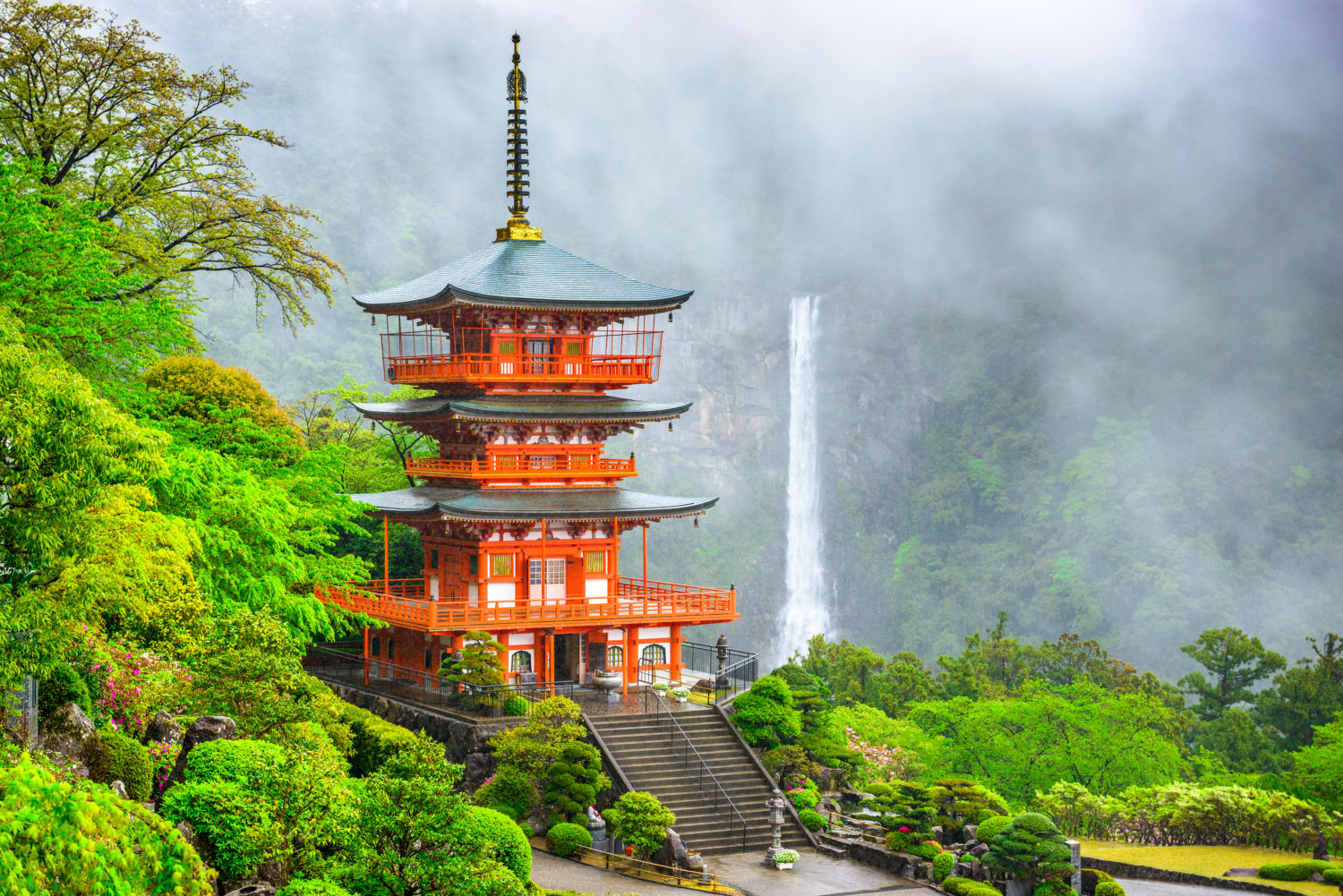
A Feast for the Senses
No journey to Wakayama would be complete without indulging in its culinary delights. This region is famed for its succulent seafood, especially its fresh tuna, sourced straight from the bountiful Pacific waters. Katsuura, a small fishing town, hosts one of Japan’s most renowned tuna markets, where visitors can sample expertly prepared sashimi, seared tataki, and rich, umami-laden tuna bowls.
Wakayama is also the birthplace of Japan’s beloved umeboshi. These pickled plums, revered for their intense tartness and health benefits, are a staple of traditional Japanese cuisine. Venture into the countryside, and you’ll find family-run orchards producing handcrafted ume products, from fragrant plum wine to delicate ume-infused sweets.
You could lose an afternoon exploring Tenpu Terrace, a contemporary multi-level café that serves delicious meals upstairs, made with local fresh fruits and vegetables that are grown at the foot of Koyasan. Downstairs is a treasure trove, selling original soaps, incense and bath salts. The owner is a kind and charismatic force who can be found wandering around the shop, offering advice on what to buy. She also teaches incredible arts and crafts workshops inspired by the seasons in a sun-drenched studio at the back of the shop.
For a truly enlightening experience, visit the majestic Shojoshin-in Temple. It is a special head temple of the Koyasan Shingon Buddism, which was founded by Kukai during the Tencho period (824-834). Today, it is the perfect place to indulge in its history and dine on delicious Buddhist style vegetarian dinner and breakfast. At the heart of the feast is the traditional Shojin curry, a vegetarian dish that is made with vegetables and seaweed.
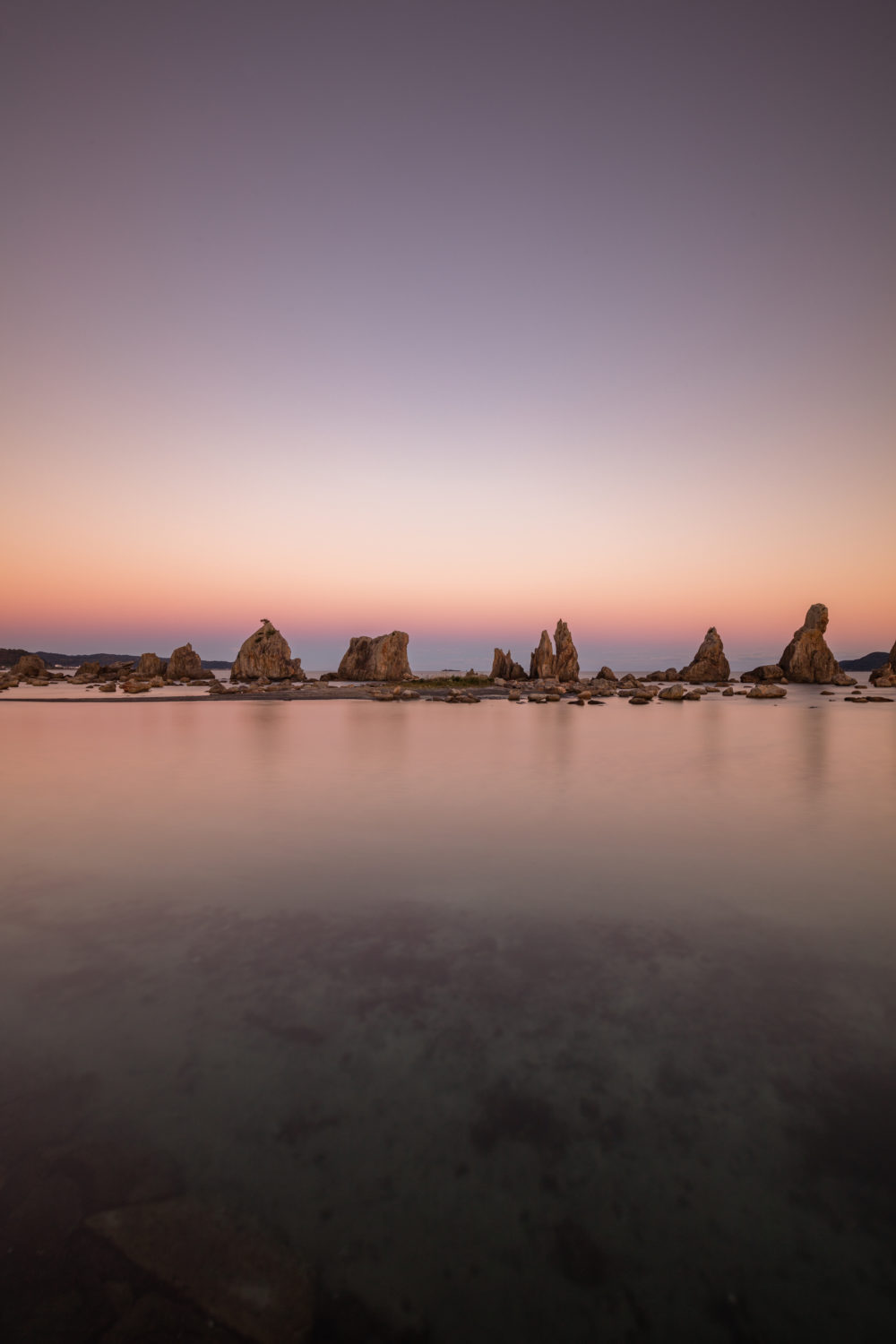
Wakayama is blessed with a plethora of homegrown ingredients and they are the focal point of the menu at Caravansarai the finest French restaurant in Wakayama. The beauty of native fruits and vegetables are celebrated here and served with French flair.
The Chef cooked in Osaka before returning to his hometown to build his own restaurant in an old Umekura storehouse, on land inherited from his grandfather. Caravansarai’s interiors boast sumptuous rustic charm and the Akane wood tables are laden with delicious food served from the heart.
Wakayama boasts a rich history, this is evident in the Yuasa Traditional Building Preservation District, a charming historical area beloved for its beautifully-preserved Edo-period townscape. Once a thriving hub for soy sauce production, Yuasa is often considered the birthplace of Japanese soy sauce, with its traditional breweries and wooden merchant houses lining narrow streets.
The district maintains its authentic atmosphere with white-walled storehouses, latticed windows, and tiled roofs, offering you a fascinating glimpse into Japan’s enthralling past. Recognised as an Important Preservation District for Groups of Traditional Buildings, Yuasa combines cultural heritage with a sense of nostalgia.
Wakayama is a deeply spiritual, mystical and astoundingly beautiful place. Whether you find solace in the sacred halls of Koyasan, marvel at the raw power of Nachi Waterfall, or savour the freshest seafood imaginable, this hidden gem promises an experience that is both transformational and unforgettable. It is impossible to leave Wakayama without feeling like some part of you has been nourished, cherished and healed.







